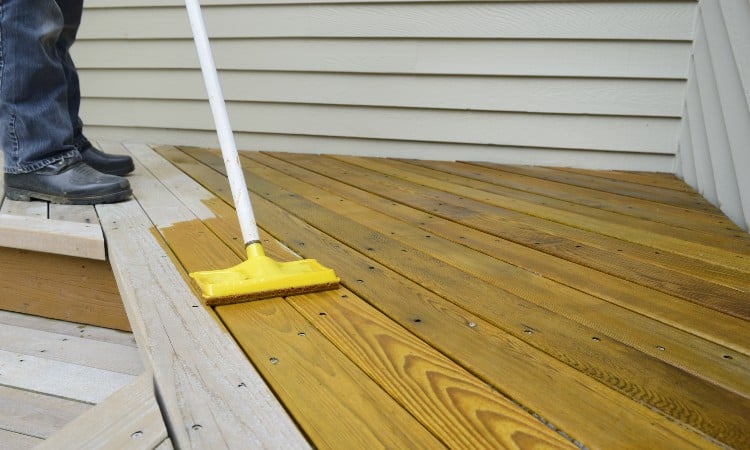A deck is more than just an extension of your living space; it’s an investment in your home and a testament to the countless memories created outdoors. Like any valuable asset, it requires regular maintenance to stand the test of time. One of the most crucial aspects of this upkeep is re-staining and sealing the wood every three to four years. This not only rejuvenates its appearance but also provides a protective barrier against the elements. Neglecting this essential step can lead to premature wear, unsightly damage, and a compromised structure. Moreover, the financial burden of replacing a deck earlier than anticipated can be significant. By understanding the importance of timely maintenance and the optimal temperatures for staining, homeowners can ensure their deck remains both beautiful and durable for years to come.
Beyond temperature considerations, here are a few more essential tips every homeowner should know about deck staining:
- Wood Preparation: Before staining, it’s vital to clean the deck thoroughly. Remove any old stain, mildew, or dirt using a deck cleaner or power washer. This ensures the new stain adheres properly and lasts longer.
- Test First: Always test a small, inconspicuous area with your chosen stain color. Wood can be unpredictable, and the final result might vary based on the wood type and age.
- Safety First: When working with stains and sealers, always wear protective gloves and eyewear. Ensure the area is well-ventilated, especially if working with oil-based stains.
- Maintenance: Even with the best staining job, regular maintenance is key. Periodically check for signs of wear or damage and reapply a top coat if needed to keep your deck looking its best.
- Eco-friendly Options: If you’re environmentally conscious, look for eco-friendly stains. These products are less harmful to the environment and often have fewer volatile organic compounds (VOCs), making them safer for you and the planet.
Importance of Ideal Deck-Staining Temperatures
- Topic: The role of weather in deck staining.
- Details:
- Discuss how weather conditions, especially temperature and humidity, can impact the staining process.
- Explain the concept of the “Goldilocks zone” in staining, where conditions are neither too hot nor too cold but just right.
- Mention potential problems that can arise when staining is done under non-ideal conditions.
- Details:
Avoid the Heat
- Topic: The challenges of staining in hot weather.
- Details:
- Describe how high temperatures can cause the stain to dry too quickly.
- Elaborate on the issues that can arise from rapid drying, such as lap marks and uneven penetration.
- Offer practical advice, like staining early in the morning before temperatures rise or waiting for a cooler day.
- Emphasize the recommended temperature threshold (not above 90 degrees Fahrenheit) for optimal staining.
- Details:
Avoid the Cold
- Topic: The difficulties of staining in cold weather.
- Details:
- Discuss how low temperatures can prolong the drying time of the stain, potentially leading to an uneven finish.
- Highlight the risks of staining when freezing temperatures are forecasted, especially if the stain hasn’t dried properly.
- Provide guidance on the ideal temperature range for staining in cooler months (highs above 50 degrees Fahrenheit).
- Caution against the potential failure of penetrating stains if temperatures drop below freezing before the stain has cured.
- Details:
Conclusion
Staining a deck is not just about choosing the right color or product; it’s about understanding the nuances of temperature and its impact on the application process. By being mindful of the weather and its effects on the staining process, homeowners can ensure a flawless finish that not only enhances the beauty of their outdoor space but also extends its lifespan. Remember, a well-maintained deck is not only a visual delight but also a testament to the care and attention given to preserving one’s home. So, the next time you think about refreshing your deck, consider the temperature and set your deck up for years of enjoyment and lasting beauty.

